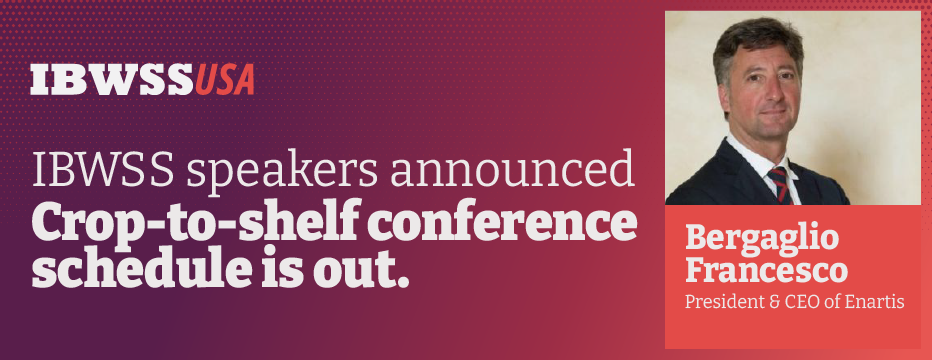Sommeliers Choice Awards 2023 Winners
BTN Opens Up Paid Articles To Help Industry Skill Up
Beverage Trade Network has opened up all paid articles under the BTN Academy umbrella in order to offer a helping hand to the industry to skill up.

We’re all aware of the havoc the pandemic has caused. Right now, most of us are social distancing and staying home (and that’s the best thing to do as of now). But just because you’re at home doesn’t mean you stop working. There are a lot of things you can work on while at home, and one of the main things you can do is learn and perk up your skills.
Surely things are tough right now, but they aren’t going to stay like this forever. The question that’s running through most minds is ‘what can I do for my business right now?’, and the answer to this is simple - learn. We all know that upscaling our existing skills and learning more to support our business is the one thing that always helps. So, why not make the most of your time at home or your business down time by reading up on professional insights and tips on how you can grow your business and reposition your strategies for the post pandemic scene.
Beverage Trade Network has opened up it’s paid articles under the BTN Academy umbrella just to help you learn and upscale your skills during this time. BTN Academy’s paid articles have been successful in helping the drinks industry learn new skills and provide operational insights to help the world of beverages.
BTN understands that right now, all you can do is sit home and learn - and of course, that’s the best thing you can do for your business - and you can do it for free through BTN Academy. Thanks to our executives’ decision, all paid articles are now free for you to learn from.
Here are some of the articles you can check out:
1. How To Build A Premium Wine Brand
Three main factors drive the trend towards premium and away from the volume
“The good news is that as consumers become more knowledgeable about wine, they are trading up for premium wines and pulling the entire wine market up with them,” says Robert Smiley.
First, while the Boomer generation still has the wine industry's largest consumer footprint, research shows that their consumption is slowly declining. Millennial wine drinkers, meanwhile, are becoming more and more educated and sophisticated about wine. As Millennials age and earn more income, they will graduate from higher price points to wines. In the last few years, the economic recovery means that wine drinkers have more disposable income and may be more likely to splurge on a premium wine. Finally, there has been a decrease in supply-side interest in the production of volume wine. Wine producers are shifting to quality over quantity approach due in part to environmental and climatic changes.
“Today’s sommeliers are not just coming up with new wines to add to a wine list,” said Sid Patel of Beverage Trade Network. “They are also designing wine programs, managing every aspect of purchasing and storing wine, and then coming up with unique ways to merchandise that wine.”
2. The Distributor’s Dilemma: Your Checklist And How To Solve One Problem At A Time
What are the major forces dominating your world?
Revenue: The reality is that 80% of your revenue comes from 20% of your suppliers. Their key items or brands are the foundation of your company’s sales. But you can’t neglect the other 80% of your brands because they are what makes your portfolio interesting and attractive to customers.
Inventory: Long tail inventories put pressure on your cash flow.
Growth: Organic growth (year over year, “same store” analysis) is a limited path to growth. Only by extreme programming, expanding your sales footprint, or acquiring new brands, can you increase growth beyond your base.
Pricing: You know by gut instinct at what price point every brand will optimize sales and you need to find a way to make a profit regardless of downward price pressures.
Proxies: Over time, decisions are being made which begin serving the needs of your organization rather than those of the customer and are putting unnecessary obstacles in the way of your clients doing business with you. These are called “proxies” and are to be avoided at all costs.
3. Build Your Portfolio To Grow, Sustain and Thrive
Customer Perspective
The customer's perspective enables brand owners to align their core customer outcome measures like satisfaction, brand loyalty, repeat orders, profitability. Brand executives are more on the floor than ever before, in front of their end consumers in liquor stores and restaurants to get direct feedback.
C1. Your customer who is a retailer or distributor has confidence in you as your brands in Category A are moving
C2. They will give your B and C category brands a chance
C3. You can use your A Category brands to open new accounts (who are price sensitive - like any new customers).
C4. Your customer's customer will also know you. Nothing is as important as your customer’s customer asking for your brand.
4. How To Pitch MEGA Chains: A Blueprint for Success
Many small companies know they have a very good product but are having difficulty gaining retail buyer attention and distribution. They are scared of companies like Wal-Mart, Costco, Whole Foods and Kroger. Only 2-3% of the suppliers who present to Wal-Mart get accepted as new suppliers in a year—you need to make your pitch count. And how are you going to do that?
● Shop the store
● Craft your story
● Be Ready for The Buyer
● Inform the Buyer Of The Successes Your Brand Has
● Get Magazine and Blog Reviews
Read Full Article with 8 more ways to help you
5. Back Door Distribution Techniques to get your Distributor
How do you stand out from all the other wines? How do you ensure that one order from the importer turns into two? The key is to often think outside the box. In the case of a winery which has a U.S. importer, but is unhappy with the level of sales or simply wants to ensure the relationship continues, opportunity can be found in developing a rapport with a chain. Not the typical chain that readily comes to mind – supermarkets and enormous national accounts with hundreds or thousands of stores. Not only are these almost impossible to penetrate and require an established broker or national distributor to develop the relationship, but they may require more volume than the average winery can provide. Smaller restaurant and retail chains which are theoretically easier to approach may provide all the case movement a winery could wish for.
6. 8 Important Tips To Stay Close To Your Distributor
Relationships matter a lot when it comes to the drinks industry, and the distributor is the most important part of the supply chain. Without your distributor, you definitely aren’t going to find a way in retail and the on-premise sector. So how can you stay close to your distributor?
Read Full Article and check out 8 ways on how to stay close to your distributor
7. Protecting Intellectual Property in Your Brand
The first step in building brand equity is to identify the elements of a brand that can hold value. In addition to the brand name or trademark, consider protectable elements in the product packaging, e.g., label design, logo, images and bottle shape.
A trademark can be most anything that triggers brand association in the mind of consumers.
A trademark is a word, name, symbol or device, or any combination thereof, used in commerce to designate the source of a good or service. This definition encompasses words, images, configurations, colors, sounds and smells.
8. Strategies to Pair Product and Account Type for Increased Portfolio Sales
Producers large, medium-sized and small have a range of wine and spirits in their portfolios, and each product is better suited to on-premise, chain/large retail, or fine wine shop accounts. The success of products in each of these account categories is determined by choosing the best strategies for pricing, packaging and distribution.
9. How To Develop and Deliver a Successful Bulk Wine Program
The key to success, suggests Wong, is understanding what success looks like, depending on where you are in the marketplace. As Wong explains, it’s helpful to think in terms of the “supply” side of the market and the “demand” side of the market. The “supply” side of the market includes the producers, while the “demand” side includes retailers and on-premise establishments like restaurants. In addition, brokers, contract suppliers, and global négociants interact with both the “demand” and “supply” side of the market.
Whether you’re a distributor, importer, winery, distillery, brewery, retailer, or anyone in the drinks industry - BTN Academy’s free insights have something for everyone. With insights offered on our website, you can successfully perk up your skill and give your business a little bit of a push just by sitting at home.










